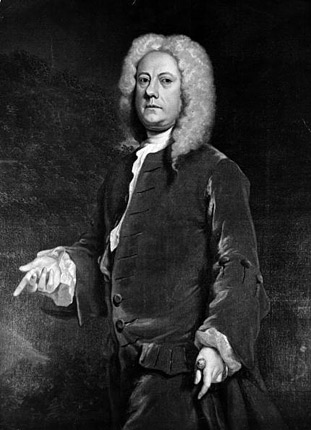<Back to Index>
- Agriculturalist Jethro Tull, 1674
- Painter Vincent Willem van Gogh, 1853
- 4th President of Malta Vincent "Ċensu" Tabone, 1913
PAGE SPONSOR

Jethro Tull (30 March 1674 – 21 February 1741) was an English agricultural pioneer who helped bring about the British Agricultural Revolution.
Tull was born in Basildon, Berkshire, to Jethro Tull, Sr. and Dorothy Buckridge, and baptized there on 30 March 1674. He grew up in Bradfield, Berkshire, and matriculated at St John's College, Oxford, at the age of 17, but appears not to have taken a degree. He was later educated at Gray's Inn.
Tull became ill with a pulmonary disorder, and as he went in a search for a cure he travelled Europe seeking more knowledge of agriculture. Influenced by the early Age of Enlightenment, he is considered to be one of the early proponents of a scientific (and especially empirical) approach to agriculture. He helped transform agricultural practices by inventing or improving numerous implements.
He
married Susannah Smith of Burton Dassett, Warwickshire, and had three children with her
– two daughters and a son. Jethro
Tull improved the seed drill,
a
device for sowing seeds effectively. At the time his workers did not
like the idea because they thought they were going to lose their jobs.
Tull also advocated the use of horses instead of oxen and invented a
horse-drawn hoe for clearing weeds, and
made changes to the design of the plough which
are still visible in modern versions. His interest in ploughing derived
from his interest in weed control, and his belief that fertilizer was
unnecessary, on the basis that nutrients locked up in soil could be
released through pulverization. Although he was incorrect in his belief
that plants obtained nourishment exclusively from such nutrients, he
was aware that horse manure carried weed seeds, and hoped to avoid
using it as fertilizer by pulverizing the soil to enhance the
availability of plant nutrients. Tull's
inventions were sometimes considered controversial and were not widely
adopted for many years. However, on the whole he introduced innovations
which contributed to the foundation of productive modern agriculture. Tull
tried to persuade European farmers to adopt what he called
"horse-hoeing husbandry", which involved growing crops in rows and
hoeing them thoroughly. Although the Chinese used this technique by at
least the 6th century BC,
this was not widely practiced in Europe until the 18th century and he was the major
contributor in this conversion. Tull died
at Prosperous Farm at Hungerford and is buried in the
churchyard of St Bartholomew's Church, Lower Basildon,
both in
Berkshire.